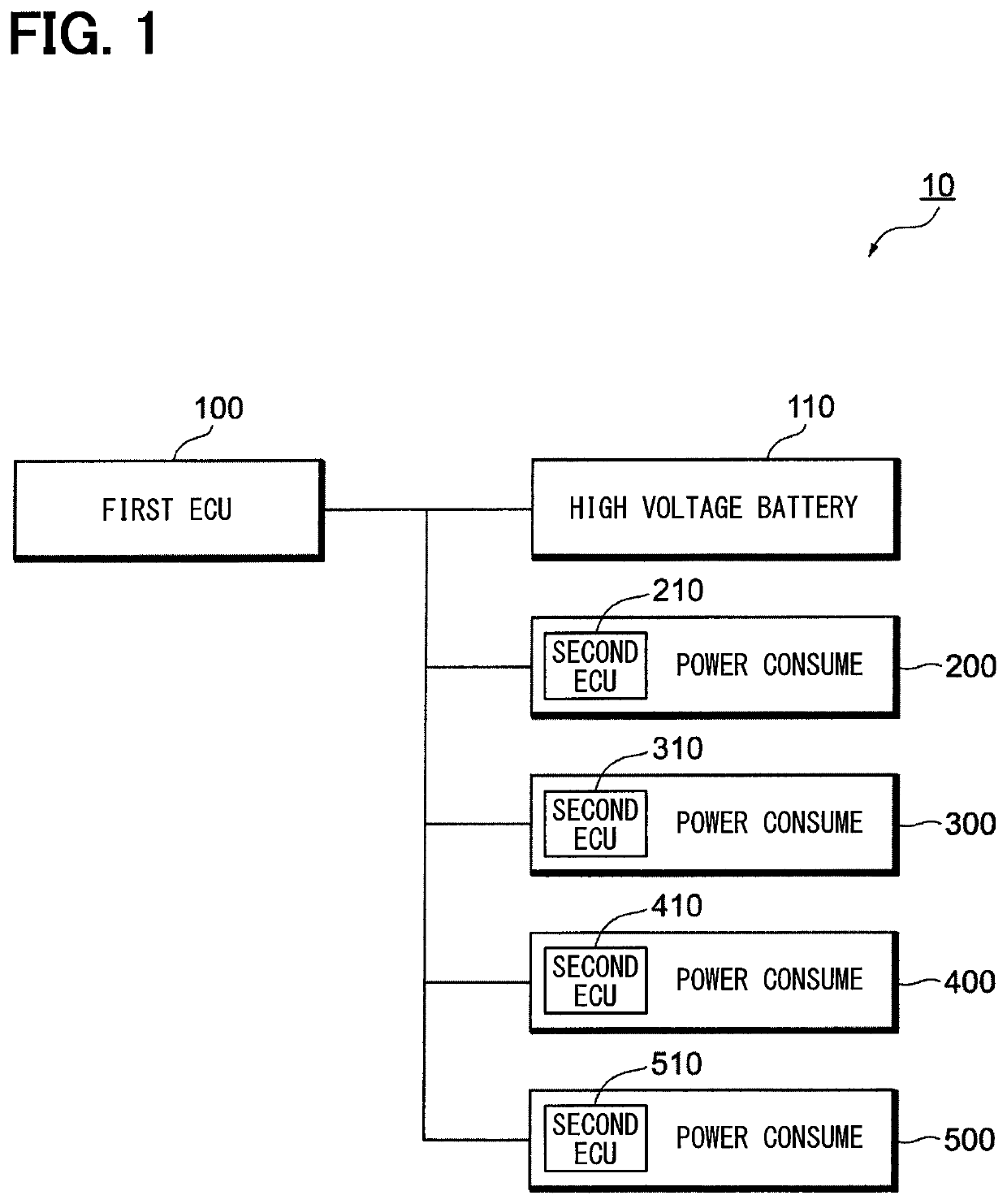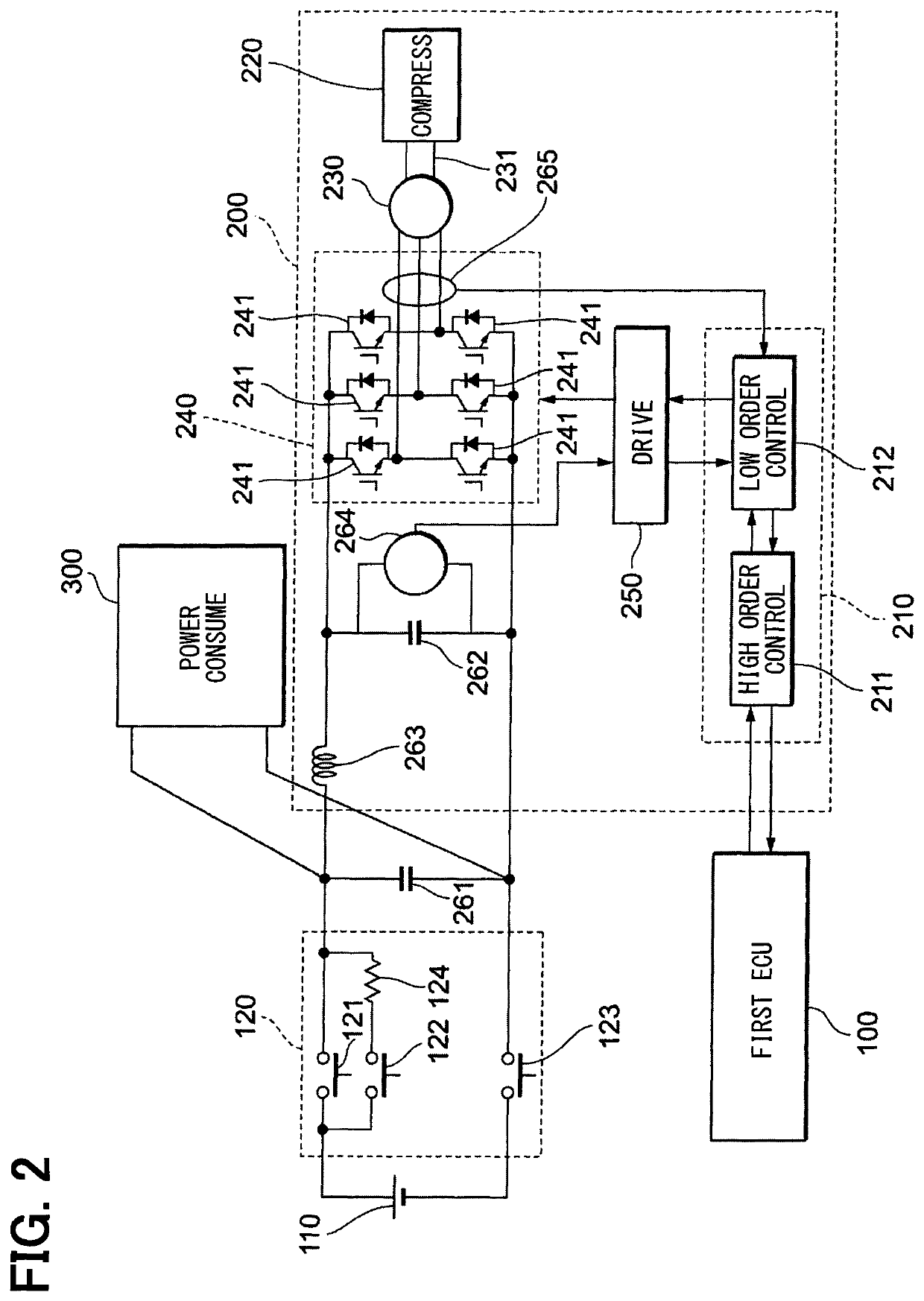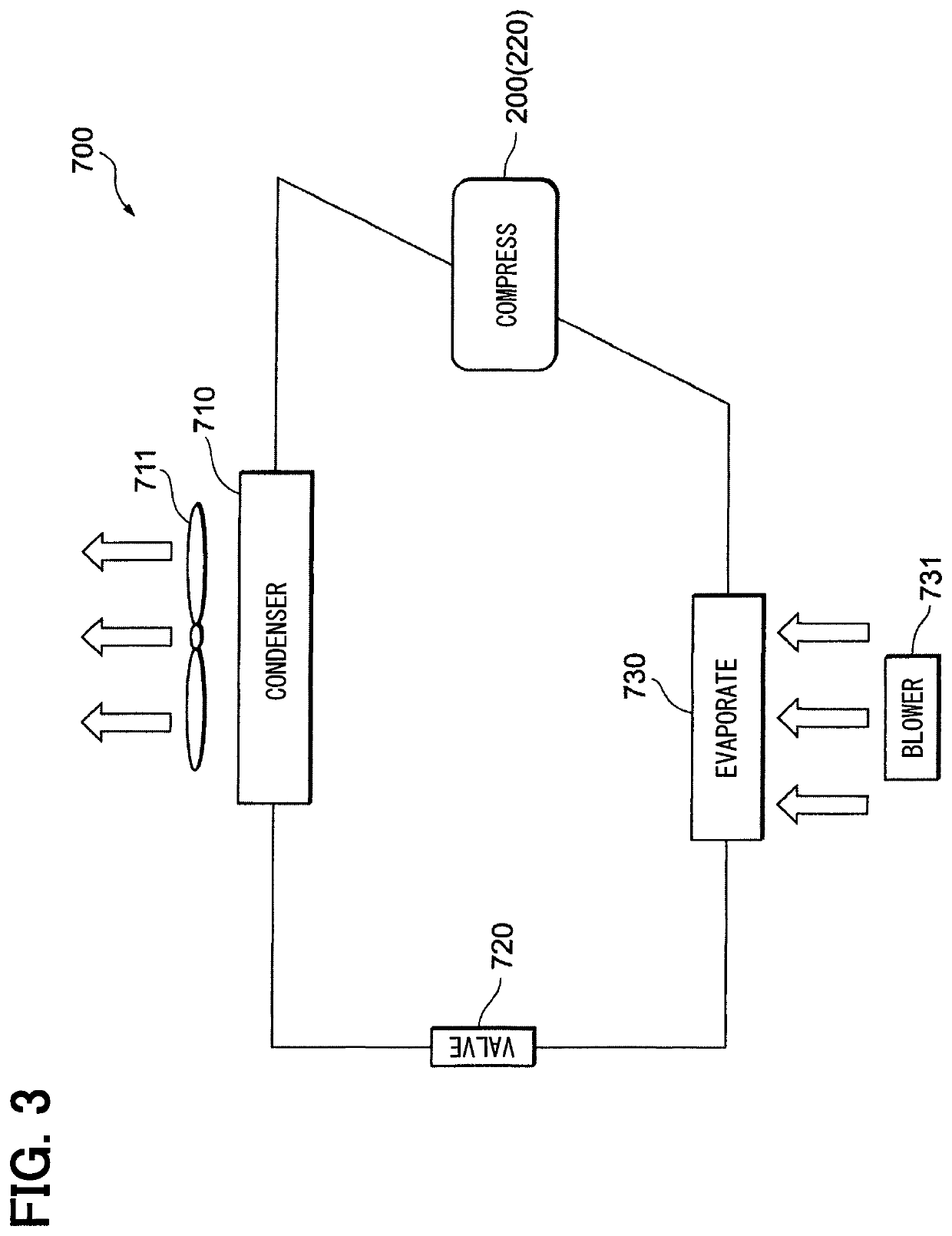Power control system for electric vehicle
a power control system and electric vehicle technology, applied in the direction of battery/fuel cell control arrangement, load balancing in dc network, transportation and packaging, etc., can solve the problems of affecting the operation of the whole system including affecting the stability and affecting the operation of the power consumption device. , to achieve the effect of reducing the consumption of electric power, and maintaining the stable operation of the power consumption devi
- Summary
- Abstract
- Description
- Claims
- Application Information
AI Technical Summary
Benefits of technology
Problems solved by technology
Method used
Image
Examples
first embodiment
[0030]The following will explain a configuration of a power control system 10 according to a first embodiment of the present disclosure with reference to FIGS. 1 to 3. The power control system 10 is configured to perform the electric power supply to each of a plurality of power consumption devices 200, 300, 400, and 500 installed in a vehicle (unshown).
[0031]As schematically illustrated in FIG. 1, the electric vehicle is mounted with a first ECU 100, a high voltage battery 110, and four power consumption devices 200, 300, 400, and 500.
[0032]The high voltage battery 110 is a storage battery for providing the electric power to a dynamo-electric machine (unshown) included in the electric vehicle. In addition, the high voltage battery 110 provides also the electric power for operation to each of the power consumption devices 200, 300, 400, and 500. The maximum of the electric power, i.e., the allocation of the available electric power (represented as “electric power allocation,” hereina...
second embodiment
[0096]A second embodiment of the present disclosure will be explained with reference to FIG. 9. In the present embodiment, a process that determines a specific mode of the electric power restriction A (or the electric power restriction B) is different from the first embodiment. The process performed by the second embodiment replaces a series of processing as in FIG. 8 with a series of processing as in FIG. 9.
[0097]A series of processing as in FIG. 9 are added with the processing of S32, S33, and S34 to FIG. 8. Of the processing in FIG. 9, the processing identical to that in FIG. 8 such as S21 is assigned with the identical sign. The following will explain only S32, S33, and S34.
[0098]In S32 performed after S21, the mode of the electric power restriction is determined; namely, it is determined whether an instruction indicating a specific mode is included in the restriction mode flag. When any instruction is not included in the restriction mode flag, the sequence proceeds to S22 and t...
third embodiment
[0103]A third embodiment of the present disclosure will be explained with reference to FIG. 10. Now, (A) of FIG. 10 indicates the time change of the electric power allocation transmitted to the power consumption device 200 from the first ECU 100. In contrast, (B) of FIG. 10 illustrates the change of the consumed electric power in the power consumption device 200.
[0104]The electric power allocation is transmitted from the first ECU 100 to the second ECU 210 each a predetermined communication period elapses. This makes it difficult to decrease the electric power allocation with a predetermined slope as in (A) of FIG. 5, for instance. Thus, in the present embodiment, the first ECU 100 transmits the electric power allocation with the mode of instant restriction and instant release as in (A) of FIG. 10; the second ECU 210 performs the electric power restriction or the release of the electric power restriction with a gentle slope. See, in (B) of FIG. 10, a period from the time t10 to the ...
PUM
 Login to View More
Login to View More Abstract
Description
Claims
Application Information
 Login to View More
Login to View More - R&D
- Intellectual Property
- Life Sciences
- Materials
- Tech Scout
- Unparalleled Data Quality
- Higher Quality Content
- 60% Fewer Hallucinations
Browse by: Latest US Patents, China's latest patents, Technical Efficacy Thesaurus, Application Domain, Technology Topic, Popular Technical Reports.
© 2025 PatSnap. All rights reserved.Legal|Privacy policy|Modern Slavery Act Transparency Statement|Sitemap|About US| Contact US: help@patsnap.com



